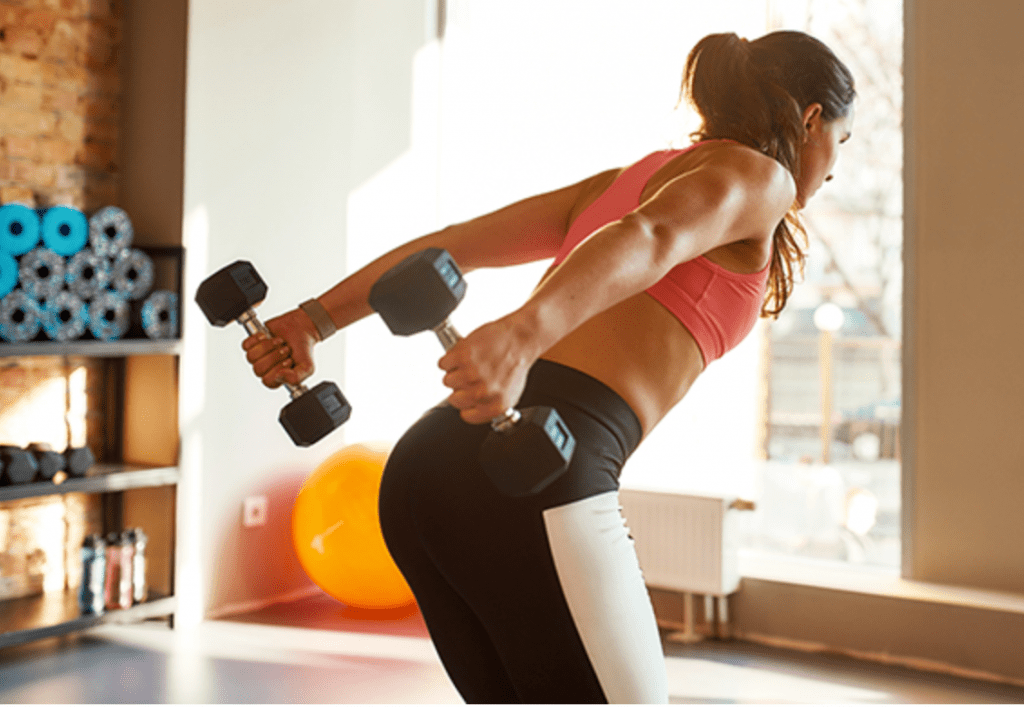Stepping into the gym presents a common dilemma: choosing between dumbbells and barbells, both of which stand as effective tools in the plethora of options for enhancing strength through resistance training.
Despite the emergence of trendy equipment like ankle weights, sandbags, and kettlebells, these two ancient heavyweights remain unparalleled. But which one holds the edge?
Dumbbells or barbells? Barbells excel in progressive overload and mechanical tension, translating into sustained muscle development. On the other hand, dumbbells offer unique benefits with their larger range of motion and unilateral training approach. Your specific needs will determine your choice.
Dumbbells

Dumbbells are a staple in any fitness space, whether a sprawling gym or a compact garage setup. They feature a short, narrow handle sandwiched between two weight plates. You can use a dumbbell with one hand or in pairs, and the weight range for each dumbbell typically spans from 2 to 100 pounds.
Dumbbells can be fixed, with rubber-coated metal plates securely locked in place. Alternatively, some are adjustable, allowing you to add or remove plates on either side. Advanced options like PowerBlocks come with selector pins or scale-assisted mechanical designs for adjusting block increments.
Barbells
No surprises here – barbells are the first love of strength athletes. Those hefty metal bars spanning between walls and racks or, more often than not, resting on shoulders and chests! Some weight plates and perhaps a bench, and voila! A world of explosive movements and intricate exercises awaits.

Barbells come in various types, with lengths reaching up to 7 feet and a standard weight of 45 pounds. Specifications are regulated by international organizations like the IWF and IPF. Regardless, each barbell has a long shaft marked with tactical knurling for grip, and shiny sleeves on either end for loading plates and securing collars.
Dumbbells vs. Barbells: The Differences
Since both tools are employed in similar training patterns, the key distinctions between dumbbells and barbells lie in the range of impact. While comparing safety, convenience, and muscle growth, one may outshine the other, but it’s not without competition.
Progressive Overload:
Progressive overload is the mantra of gradually increasing workout intensity for strength training. Your muscles adapt to a specific load, emphasizing the principle of specific adaptations to impose demands. To continue muscle growth, you must increase the load or repetitions. The muscle size increase from the loads or repetitions produced by dumbbells and barbells is similar.
It’s crucial to note that barbells facilitate both types of progression seamlessly. A standard barbell has 16 inches of sleeve space on each side, accommodating four bumper plates and double the quantity of iron plates. In contrast, dumbbells have a more limited range. If you find a 100-pound dumbbell that you can lift, consider yourself fortunate. But eventually, you’ll hit a plateau.
Muscle Activation:
In situations where the weight is substantial, barbells indeed have the upper hand, supporting muscle growth. Research examining muscle activation patterns in bench press and overhead press found that the load with dumbbells equates to 85% of the load with barbells. You can typically lift 15% more weight with a barbell compared to dumbbells.

What happens if you lift equal weight from a rack? In this case, the dumbbell bench press elicits higher activation in the chest and biceps, with less involvement of the triceps. This is due to its larger range of motion. Envision a barbell bench press – when the bar contacts the chest, you must stop. In contrast, dumbbells are not connected. They allow movement in all planes and ranges. Your elbows can sink deeper, fully stretching muscle fibers.
ACE Fitness has crowned dumbbell bench presses and lateral raises as the top shoulder exercises, surpassing barbell upright rows. Therefore, for exercises targeting shoulders and chest, dumbbells are more suitable, as long as you don’t face challenges in progression.
Stability and Safety:
Note that there is a balance between stability and range of motion. In weightlifting, stability, also known as balance, is essential. The more stable you are, the greater the power output generated. That’s why an athlete maxing out at 300 pounds on bench press may struggle to budge a pair of 150-pound dumbbells.
The design of barbells demands less work from smaller stabilizing muscles. The responsibility falls mostly on major muscles such as quadriceps, glutes, and latissimus dorsi. Dumbbells, with their relative freedom, bring about more intricate stability. You can rotate your wrists outward, perform narrow-grip bench presses, or increase lateral extensions horizontally. Your body finds a more natural path. Manipulating a straight bar would make these modifications impossible.
Muscle Imbalance:
Muscle imbalance is not an unfamiliar concept. One hand or leg may be weaker than the other. When taking the first step or throwing a baseball, you might instinctively favor the dominant arm. Shoulder imbalances are frequently observed among baseball players and swimmers. Similarly, fencers encourage imbalances by performing excessive lunging motions.
These muscle imbalances can accumulate in the form of overuse and other injuries. Barbells, with all their outstanding features, fail to address these strength discrepancies. Dumbbells are more suitable for unilateral (single-joint) exercises, making them ideal for isolating certain muscles.
Conclusion:
Dumbbells and barbells both stand as excellent tools for exercise, with the choice depending on your individual needs and goals. If you seek progressive overload and heavy training, the barbell might be more suitable. However, if you desire a broader range of motion, increased muscle activation, and an easier way to identify and correct imbalances, dumbbells could be the better choice. In practical workouts, a combination of both tools may be necessary to achieve comprehensive muscle development and bodily equilibrium.



+ There are no comments
Add yours